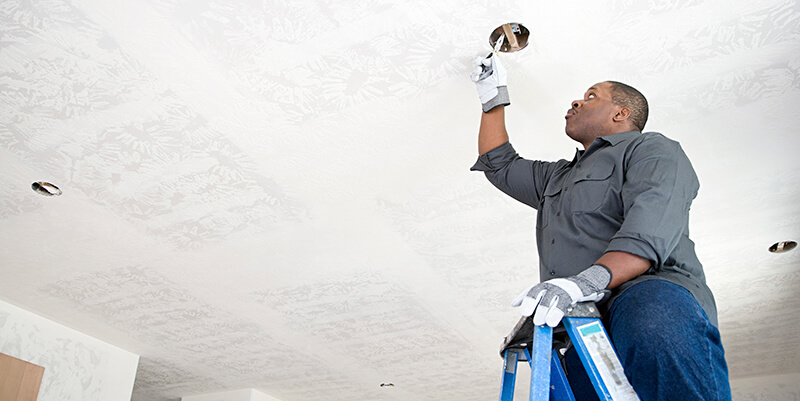
The nationwide labor shortage is real, and it’s a significant problem for nearly every industry.
Unfortunately, in the retrofit business, a labor shortage – a skilled labor shortage, to be more specific – is nothing new. The post-pandemic employment landscape has only exacerbated a challenge that lighting professionals have been dealing with for several years.
The good news for retrofit contractors is, although the skilled labor shortage has been around for a while, technology provides one pathway to a solution. Technology has served to engage and attract a broader audience of talented energy workers to the retrofit industry, and digital providers like SnapCount are helping pave the way for continued growth.
As we’ll explore in this article, smart investments in software can reduce the amount of labor needed to complete a project, while also helping your business identify and attract the most qualified talent in the industry.
The State of Labor in the Retrofit Industry
The U.S. Bureau of Labor Statistics predicts employment of electricians will grow 8% from 2019 to 2029, driven by increased construction spending and demand for alternative energy sources. Yet, while there is plenty of work to be had for skilled electricians, there are fewer electricians available to do the jobs.
The National Electrical Contracting Association (NECA) reports that around 40% of the current workforce will be retired by 2031. Since it takes four years for a new entrant to learn basic craft and another three to five years to reach journeyman proficiency, knowledge is draining out of the workforce faster than it can be transferred. We should note here that 2020 saw more Baby Boomers retiring than ever before, so the gap between retiring and incoming electricians may increase significantly over the coming years.
As it turns out, we’ve had plenty of time to see this coming. As far back as 2018, lighting industry publication lightED reported on a labor shortage in the lighting field. The magazine framed the issue as part of a larger skilled worker shortage in the construction industry in general.
A portion of blame for this shortage can be laid at the feet a declining attention to trade schools and a perception that university and college offer greater opportunities. This educational situation has led to the well-publicized death of shop classes in public schools, as a college-bound curriculum is favored. As a result, technical and vocational schools aren’t on the radar for many young people, one expert from the International Code Council told lightED:
"[T]here’s a lack of awareness by young people, particularly at the high school level, about the prospects of good-paying jobs in the electrical, plumbing, welding, carpentry, masonry and other construction-related fields."
- Sara Yerkes, International Code Council
How the Labor Shortage Is Affecting Lighting Retrofit Businesses
Our own industry contacts confirm that the skilled labor shortage - both before and after the pandemic - is causing problems for lighting retrofitters.
Coming out of the pandemic, the demand for LED lighting retrofit work, a key component to an energy savings project, is exceptionally high. Organizations that postponed projects due to the pandemic are now looking to get started again. And unprecedented Congressional spending has sparked the development of new projects.
But many lighting retrofitters are struggling to return to their pre-COVID staffing levels. As we’ve seen in countless employment fields, people who were let go during the pandemic may have sought employment with other firms or in other areas.
When skilled labor is hard to find, retrofitters must often compensate by hiring less experienced job seekers and then training them on the job. The question is: How do you attract them?
What Do Young Job Seekers Want?
For better or worse, job seekers are in the driver’s seat of today’s labor market. Business owners in any field hoping to attract and retain top talent must first understand that the latest generation of job seekers sees work and life from a different perspective than their predecessors.
Work to Live, Not Live to Work
For example, the younger employees we’ve talked to recently tell us they prioritize work-life balance. They’ve seen their parents work 60, 70, or even 80 hours a week for someone else for no extra pay…and often, no job security. They don’t want that for themselves.
Today’s younger employees expect to work hard and well during a standard 40-hour per week schedule, while leaving the rest of their time free for family and outside endeavors. They believe their companies should plan to have the appropriate labor force to complete the work required, with overtime being the exception, not the norm.
Values Alignment
Millennials and the members of Generation Z (the youngest current group of job seekers) also tend to be motivated in their job searches by more than higher wages. These young people want work with a sense of purpose; they want to feel like they’re contributing to something greater than themselves that aligns with their values.
One area for societal contribution is climate change, with energy efficiency at the center of our industry, and lighting retrofits a key component of every project – with each project reducing greenhouse gas emissions and thus an incremental climate improvement. A lighting retrofit contractor therefore does have additional features that can help attract new talent to the industry.
Related Content: Business Growth Strategies for Retrofitters: Tips for Scaling Your Company
How Software Can Help Your Lighting Business Conquer the Skilled Labor Shortage
Experienced business owners know there’s no true substitute for a highly qualified, highly competent employee. But when labor is in short supply, technology can be deployed to improve the ability to get the work done.
Attracting Top Talent
First, cutting-edge technology is itself an enticement to top talent. Younger members of the labor force are digital natives. They grew up with technology, and they expect technology. Technology can add a level of professionalism to a project that allows the users to gain a sense of pride in their final product.
Doing More With Less
Business owners know that with this labor shortage on hand, the onus is on them to find and develop promising newcomers. Of course, that comes with its own set of problems: Less-experienced workers may struggle with tasks like completing a facility audit in a timely fashion, which can lead to delays, backups, decreased efficiency and lost revenue.
It’s not their fault; they’ll learn eventually. But in the meantime, technology can help you overcome the labor shortage by streamlining your processes, making it easier to get more done with fewer people (or fewer experienced people).
The right digital tool can help you:
- Streamline the time-consuming manual work involved with a typical lighting audit (such as transcribing handwritten notes, transferring data, generating quotes and creating proposals) to mere minutes – or even completely automate it.
- Make project management more efficient by enabling real-time project tracking and equipping crews to initiate purchase orders.
- Design a standardized audit process your employees can repeat from site to site. This will help you bring less experienced talent up to speed quickly.
As the pandemic economy fades away, demand for lighting retrofit projects is skyrocketing. Now is the perfect time to consider investing in lighting retrofit software so you can attract more talent and make more of the resources you do have.
Don’t let the labor shortage become an impediment to your company’s growth. Engage technology in your operations to attract talent, retain talent, and make your project results more professional. StreamLinx, a NAESCO member company that offers this technology, has prepared a “Lighting Retrofit Software Buying Guide” that may help you in your discovery.






Share this post: